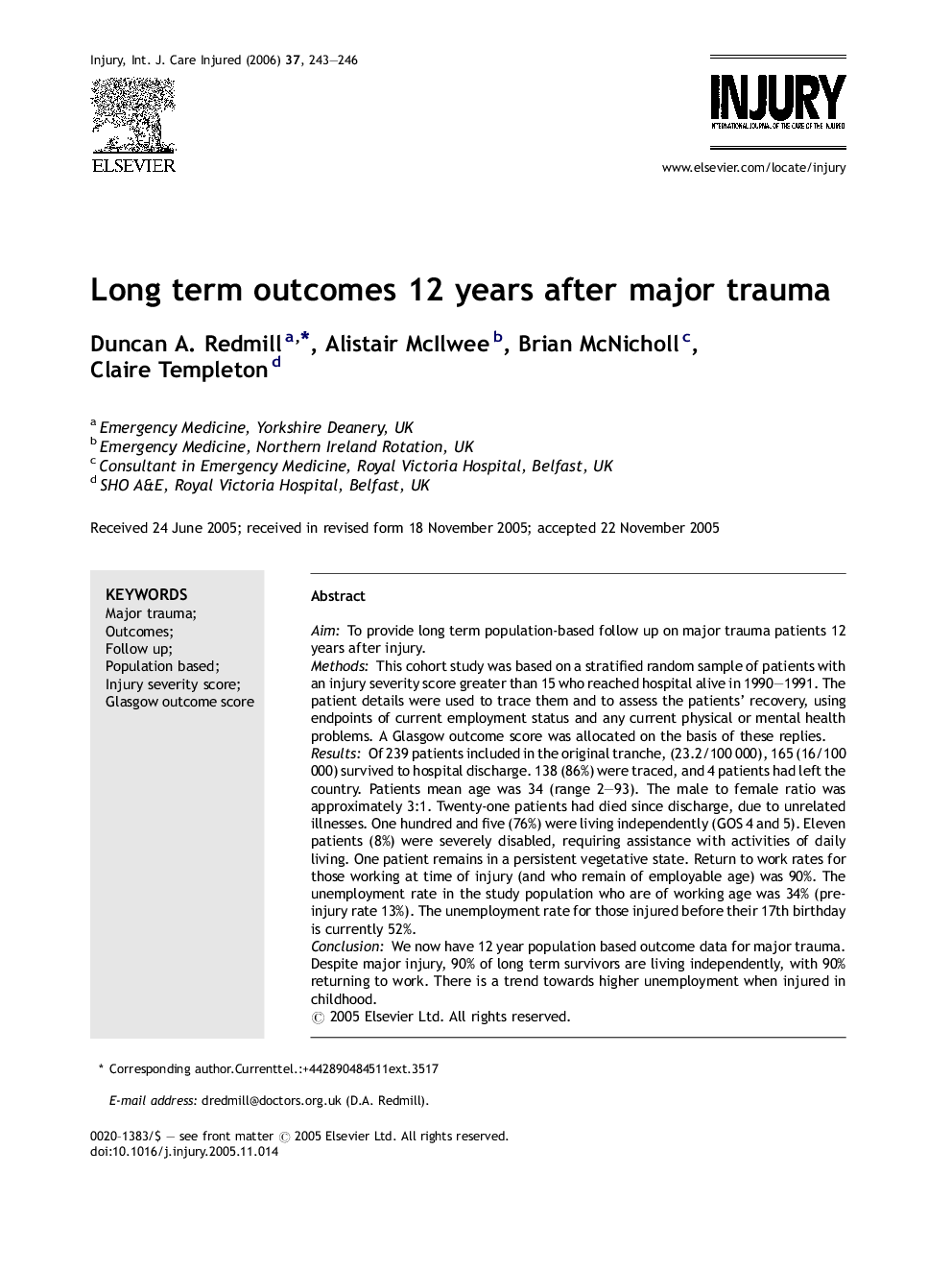| Article ID | Journal | Published Year | Pages | File Type |
|---|---|---|---|---|
| 3243059 | Injury | 2006 | 4 Pages |
AimTo provide long term population-based follow up on major trauma patients 12 years after injury.MethodsThis cohort study was based on a stratified random sample of patients with an injury severity score greater than 15 who reached hospital alive in 1990–1991. The patient details were used to trace them and to assess the patients’ recovery, using endpoints of current employment status and any current physical or mental health problems. A Glasgow outcome score was allocated on the basis of these replies.ResultsOf 239 patients included in the original tranche, (23.2/100 000), 165 (16/100 000) survived to hospital discharge. 138 (86%) were traced, and 4 patients had left the country. Patients mean age was 34 (range 2–93). The male to female ratio was approximately 3:1. Twenty-one patients had died since discharge, due to unrelated illnesses. One hundred and five (76%) were living independently (GOS 4 and 5). Eleven patients (8%) were severely disabled, requiring assistance with activities of daily living. One patient remains in a persistent vegetative state. Return to work rates for those working at time of injury (and who remain of employable age) was 90%. The unemployment rate in the study population who are of working age was 34% (pre-injury rate 13%). The unemployment rate for those injured before their 17th birthday is currently 52%.ConclusionWe now have 12 year population based outcome data for major trauma. Despite major injury, 90% of long term survivors are living independently, with 90% returning to work. There is a trend towards higher unemployment when injured in childhood.
